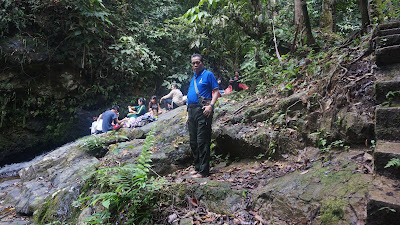It's common in this life anyone is always a hope or expectation of the environment. Starting from the family , the surrounding and the community. New born baby, the parents' hope is already in the baby. They hope the baby to be a pious child, smart, and so on. Likewise, when school, parents hope that every time they receive their child's report card, they will be ranked first.
This continues. Many parents want their children to go to school, some want their children to go to public schools, some want to go to madrasas, Islamic boarding schools and so on. And expectations apply to all aspects of life, such as behavior, speech, manners, behavior and so on and so on. So that many people in this life behave not as they want but act like the expectations of their environment.
Meeting other people's expectations is indeed a positive thing. But if we always hope to fulfill it, of course it is not good, we are not free to act and act, work and express as we desire. In fact, Hamas, Nurhan RT, who wrote on IDNTIMES COM, stated that there are 5 bad effects that occur if we expect too much to meet the expectations of others, namely:
1. You always depend on happiness based on validation from others
The first bad impact is that you will not be able to make your own version of happiness.
If you always depend on the benchmark of happiness based on the validation of others, then you will be confused what is the true meaning of happiness in your opinion? If that happens, as a result, your life will only be about what other people think so that true happiness is difficult to happen.
2. You will feel burdened in living everyday life
Not only is it difficult to find true happiness, you will always feel burdened if you often meet other people's expectations. This is because you always try not to make mistakes so as not to be blasphemed by others.
At first glance, you are so careful in socializing. However, in reality you feel depressed because you are living a life that is not what you want. From now on, try to stop this habit because it will only make you suffer.
3. You will tend to underestimate your own abilities
Thinking too much about other people's expectations will only make it easy for you to underestimate your own abilities. This can happen because you only focus on the bad scorn from others about you. So, you rarely appreciate all your efforts.
In fact, you need to appreciate every hard work that has been done by yourself, you know. So that this does not happen, try not to underestimate yourself, okay?
4. You will use various ways to fulfill expectations, even if it hurts
Someone who often tries to meet the expectations of others is identical to a hard working attitude but in a negative context.
If usually someone will work hard for their own achievement, but in this case you do it for the fulfillment of other people's expectations. You will also try to do things even though it is beyond your ability.
If you keep doing it, sooner or later it will torture you.
5. If you fail to meet other people's expectations, you will become stressed
It was previously mentioned that someone who is used to meeting other people's expectations will tend to be willing to do everything. If you don't stop, bad things will happen, namely prolonged stress if you fail to meet expectations.
The stress that arises is not because of disappointment, but fear of blasphemy from others. Bad things like this should not happen, because failure is a natural thing.
After reading this article, cut back on meeting other people's expectations of you. Remember that what saves your life from adversity is yourself, not other people's expectations. good luck!
Notes:
1. Text sourced from https://www.idntimes.com/life/inspiration/tenda-bersajak-nations/dampak-jika-terlalu-memenuhi-ekspektasi-orang-lain-c1c2/5
2, Some pictures are taken from google.

































